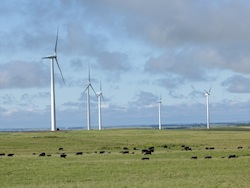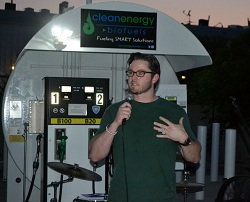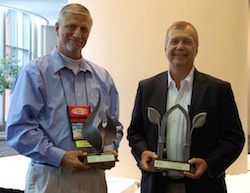Leaders from six Sioux Indian Tribes along with former U.S. President Bill Clinton have announced a new wind power initiative for South Dakota. The project is being assisted by Arent Fox a team including former Senator Byron Dorgan, co-chair of the Government Relations practice, and Communications, Technology & Mobile partner Jonathan E. Canis and associate G. David Carter. The project is supported by the Clinton Global Initiative.
 “Having served as Chairman of the US Senate Committee on Indian Affairs, I understand the strong desire of the Indian Tribes to build ‘Indian owned’ wind power projects to create new jobs and affordable power for their Tribes,” said Senator Dorgan. “This project is a unique opportunity for the Sioux Tribes in South Dakota to chart their own destiny. They live on lands that are rich with wind resources and they can use those resources to build a large wind energy project that can both help the Tribes and produce clean, renewable power for our country for decades to come.”
“Having served as Chairman of the US Senate Committee on Indian Affairs, I understand the strong desire of the Indian Tribes to build ‘Indian owned’ wind power projects to create new jobs and affordable power for their Tribes,” said Senator Dorgan. “This project is a unique opportunity for the Sioux Tribes in South Dakota to chart their own destiny. They live on lands that are rich with wind resources and they can use those resources to build a large wind energy project that can both help the Tribes and produce clean, renewable power for our country for decades to come.”
Dorgan continued, “Together with my colleagues at Arent Fox, I have been honored to work with elected leaders of the Tribes to plan this project and I am especially proud of the recognition given it today by President Clinton and the Clinton Global Initiative.”
Through the project, the Tribes stand to infuse up to $3 billion directly into the South Dakota economy, an amount roughly equal to the impact of the entire manufacturing sector in South Dakota in a given year. The planned project could generate 1-2 gigawatts of power annually. Measured conservatively, that’s more than enough power to electrify the homes in Denver, Colorado for the next 20 years, the typical useful lifespan of the wind turbines.
The majority of the project’s funding will come through the sale of bonds by a Multi-Tribal Power Authority, which are expected to be made available to investors in about two years, following a critical planning and preparation stage. For this reason, the Tribes have partnered with the crowdfunding platform Rally.org to seek funding and raise general awareness for the project.
The Tribes participating in the project include Cheyenne River Sioux Tribe, Crow Creek Sioux Tribe, Oglala Sioux Tribe, Rosebud Sioux Tribe, Sisseton-Wahpeton Oyate, and Yankton Sioux Tribe.









